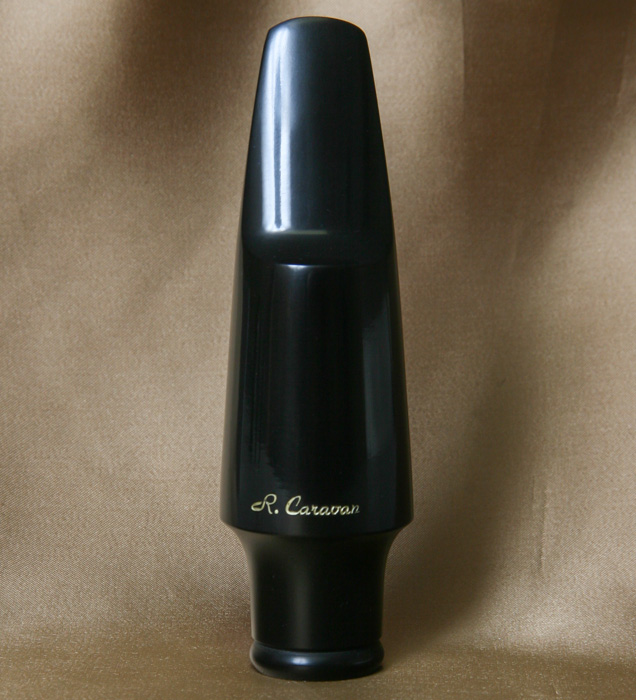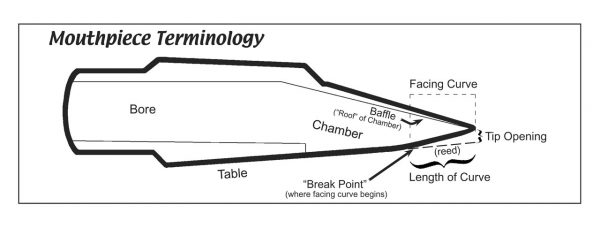Caravan Baritone Saxophone Mouthpiece
The Caravan Baritone Saxophone Mouthpiece is a modern manifestation of the vintage large-body open-chamber mouthpiece, producing a dark, harmonically well–balanced sound without being stuffy and restrictive. Its low register tones are warm and round without the rough edges commonly produced by other mouthpieces, while its upper register tones are full and beautiful without the typical “whining” quality so commonly heard in the baritone’s upper left hand. The baritone mouthpiece is available in one standard facing that has a tip opening of around .075 in.
The Ronald Caravan Saxophone Mouthpiece
Ronald L. Caravan: „Available for soprano, alto, tenor and baritone saxophones, this mouthpiece represents a modern manifestation of Adolphe Sax´s original mouthpiece design. The „open chamber“ characteristic (no construction in the tone chamber) provides for considerable tonal depth and darkness in quality for „classical“ performance on saxophone, but the tone chamber is also sized to allow for plenty of power and richness compared with older open-chamber designs. The beautifully balanced sound this mouthpiece can produce comes primarily from the deep baffle and round tone chamber that blends smoothly into the bore of the mouthpiece. Wider side and tip rails provide for greater purity in the tone and greater homogenity of color throughout the saxophone´s range.
This saxophone mouthpiece has been designed to make it easier for the saxophonist to produce a tone quality that corresponds appropriately to the sounds heard among other woodwind performers in symphonic and classical music in America – an „American“ sound representing, more or less, a syntesis of various European „schools.“ The sound this mouthpiece encourages is a particularly attractive alternative to the brighter, „brassier“ sounds generally associated with the French school and the mouthpiece characteristics that produce those results – a sound concept generally not found favour among other symphony musicians in this country.“


